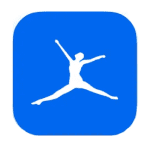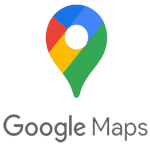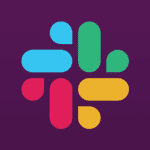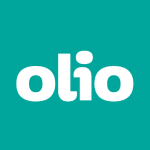The Jobs-to-be-Done (JTBD) theory has become a crucial approach for companies aiming to improve their digital products and mobile apps. By focusing on the core jobs users need to accomplish, businesses can better understand their target audience and create products that cater to their needs.
Here, we’ll explore how the JTBD theory can help improve user experience, drive innovation, ensure accessibility, integrate with existing systems, and promote sustainability in digital and mobile app development.
1: User Experience
Understanding what users are trying to accomplish, or the “jobs” they need to get done, lies at the heart of the Jobs-to-be-Done (JTBD) theory. By leveraging this framework, software companies can gain a deeper insight into their users’ needs and preferences, allowing them to design products that cater to those needs. The result is a more intuitive and satisfying user experience that drives customer loyalty and generates positive word-of-mouth. Here are two examples of mobile apps that excel in user experience by adopting the JTBD approach:
MyFitnessPal: MyFitnessPal is a health and fitness app that helps users track their nutrition and exercise, making it easier to achieve weight loss or fitness goals. By understanding the core job of simplifying the process of monitoring food intake and physical activity, the app offers a user-friendly interface with features like a barcode scanner, customizable goals, and social support, all of which contribute to a satisfying user experience.
Todoist: Todoist is a task management app designed to help users organize their tasks and stay on top of their to-do lists. By focusing on the job of streamlining task management, Todoist has created an intuitive user experience with features such as smart scheduling, project organization, and seamless synchronization across devices. This ensures that users can effectively manage their tasks and maintain productivity.
These examples showcase how the JTBD framework can empower companies to create digital products and mobile apps with a stellar user experience that not only meets but exceeds user expectations.
2: Innovation
The JTBD theory has the potential to fuel innovation by encouraging companies to focus on the core jobs users need to accomplish. This approach allows businesses to identify unmet needs and develop creative solutions that set them apart from competitors. Two notable examples of mobile apps that have achieved success through innovative solutions based on the JTBD framework are Spotify and Duolingo.
Spotify, a music streaming app, addressed the need for easy access to a vast music library and personalized listening experiences. By leveraging the JTBD framework, Spotify introduced features like Discover Weekly, Release Radar, and Daily Mix playlists, which are tailored to users’ unique listening habits. These innovative features have contributed to Spotify’s success and industry leadership.
Duolingo, a language-learning app, is another example of innovation driven by JTBD. Recognizing the need for a convenient and engaging way to learn new languages, Duolingo developed a gamified learning experience that makes learning fun and accessible. By focusing on the core job of language acquisition, Duolingo has managed to attract millions of users worldwide and become a leader in its industry.
Both Spotify and Duolingo demonstrate how companies can leverage JTBD theory to generate innovative ideas and solutions that set them apart from competitors and drive their success in the digital and mobile app markets.
Section 3: Accessibility
Implementing the JTBD framework can help companies create more accessible products by focusing on the core jobs that users need to accomplish. This emphasis on user needs rather than specific features or interfaces enables companies to design products that are flexible and adaptable for users with varying needs and abilities. Here are two examples of mobile apps that have made strides in accessibility by incorporating the JTBD approach:
Google Maps: Google Maps is a widely-used navigation app that has prioritized accessibility to cater to users with diverse needs. By recognizing that the core job of navigating from one location to another must be accessible to all users, Google Maps has introduced features like voice guidance, large text size, and wheelchair-accessible routing options. These inclusive features ensure that the app is usable by individuals with visual impairments, hearing impairments, and mobility challenges.
Be My Eyes: Be My Eyes is an app that connects visually impaired users with sighted volunteers for assistance with daily tasks. By focusing on the core job of providing visual support, the app has made it possible for visually impaired individuals to receive help with tasks like reading labels, identifying colors, and navigating unfamiliar environments. Be My Eyes has created an accessible solution for users with visual impairments by harnessing the power of a global network of sighted volunteers.
These examples illustrate how adopting the JTBD approach can lead to the development of more inclusive and accessible products that cater to a diverse range of user needs. By prioritizing the essential tasks that users seek to accomplish, companies can create innovative solutions that break down barriers and empower individuals with varying abilities to engage with technology effectively.
4: Integration
The JTBD framework can also guide companies in developing products that seamlessly integrate with existing systems and technologies. By focusing on the core jobs users need to accomplish, businesses can design products that are modular, adaptable, and easily integrated with other tools and platforms. This can enhance the value offered to users and make products more competitive. Here are two examples of mobile apps that have excelled in integration by adopting the JTBD approach:
Slack: Slack is a team communication and collaboration app that has become popular due to its ability to integrate with a wide variety of tools and services. By recognizing that the core job of effective team communication must be compatible with other tools used by teams, Slack has developed a robust API and integration ecosystem. This has allowed the app to connect seamlessly with other popular services like Google Drive, Trello, and Salesforce, enabling users to access multiple tools within a single platform.
IFTTT (If This Then That): IFTTT is an app that simplifies the process of connecting and automating various apps and devices. By focusing on the core job of streamlining app interactions, IFTTT has developed a platform that allows users to create custom automations called “Applets.” These Applets enable different apps and services to work together, allowing users to enjoy a more integrated and efficient digital experience.
Both Slack and IFTTT demonstrate the benefits of adopting the JTBD approach in designing products that can easily integrate with existing systems and technologies. This focus on seamless integration not only adds value to users by simplifying their digital experience but also enhances the overall competitiveness of the product in the market.
5: Sustainability
Embracing the JTBD framework can help companies promote sustainability by focusing on long-term user needs and goals. By designing products that are built to last and addressing users’ core jobs in a sustainable and responsible way, businesses can minimize waste and promote environmental stewardship. This can also lead to cost savings and other business benefits. Here are two examples of mobile apps that have excelled in sustainability by adopting the JTBD approach:
Ecosia: Ecosia is a search engine app that promotes sustainability by using its profits to plant trees around the world. By recognizing the core job of providing search engine functionality while addressing users’ concerns about environmental impact, Ecosia has created a unique value proposition. Users can seamlessly perform searches while contributing to reforestation efforts, making it a sustainable alternative to traditional search engines.
OLIO: OLIO is a food-sharing app that connects users with surplus food to help reduce food waste. By focusing on the core job of redistributing excess food to those who can use it, OLIO has created a platform that encourages sustainability and reduces waste. Users can easily share surplus food with their neighbors or local community, promoting a more sustainable and environmentally friendly approach to food consumption.
These examples highlight how adopting the JTBD framework can lead companies to develop products that not only address users’ core needs but also promote sustainability and responsible practices in the digital and mobile app space.
Leaware case study: BeautyBox
Leaware successfully applied the Jobs-to-be-Done principles in developing an innovative and user-friendly mobile application called BeautyBox. This app connects users seeking beauty services with professionals who offer them, creating a seamless experience for both parties.
With a focus on user experience, innovation, and sustainability, the Leaware team dedicated themselves to crafting an application that met the unique needs of its users. BeautyBox allows users to search and arrange beauty services in their chosen location, access daily beauty tips, and even learn from makeup tutorials. By providing tutorials, users can stay up-to-date with the latest trends and learn the best makeup techniques for their face shape.
As a startup, BeautyBox aimed to quickly release the first version of its solution to the market. Leaware took the time to understand the market opportunities and analyze the behavior of both customers and service providers. This research led to the development of a solution that accurately identified user needs and provided a user-friendly, intuitive interface to accomplish their tasks.
The BeautyBox app showcases the benefits of applying the Jobs-to-be-Done framework, such as:
- Access to local beauty services
- The ability to compare different professionals and prices
- Makeup tutorials and beauty tips
- DIY beauty tips and facial treatments
By incorporating the JTBD principles, Leaware was able to create a mobile app that stands out in the market and effectively addresses the needs of both beauty service seekers and providers.
Conclusion:
The Jobs-to-be-Done framework has proven to be an invaluable approach for companies looking to create successful digital products and mobile apps. By focusing on the core jobs users need to accomplish, businesses can develop a deeper understanding of their target audience and design solutions that cater to user needs in terms of user experience, innovation, accessibility, integration, and sustainability.
The examples demonstrate how various mobile apps have leveraged the JTBD approach to achieve success in their respective industries.
By adopting this framework, businesses can better position themselves to create digital products and mobile apps that resonate with users, stand out from competitors, and contribute to a more sustainable and inclusive digital landscape.
Ultimately, embracing the JTBD framework can lead to the development of innovative and purpose-driven solutions that create lasting value for both users and companies alike.


















